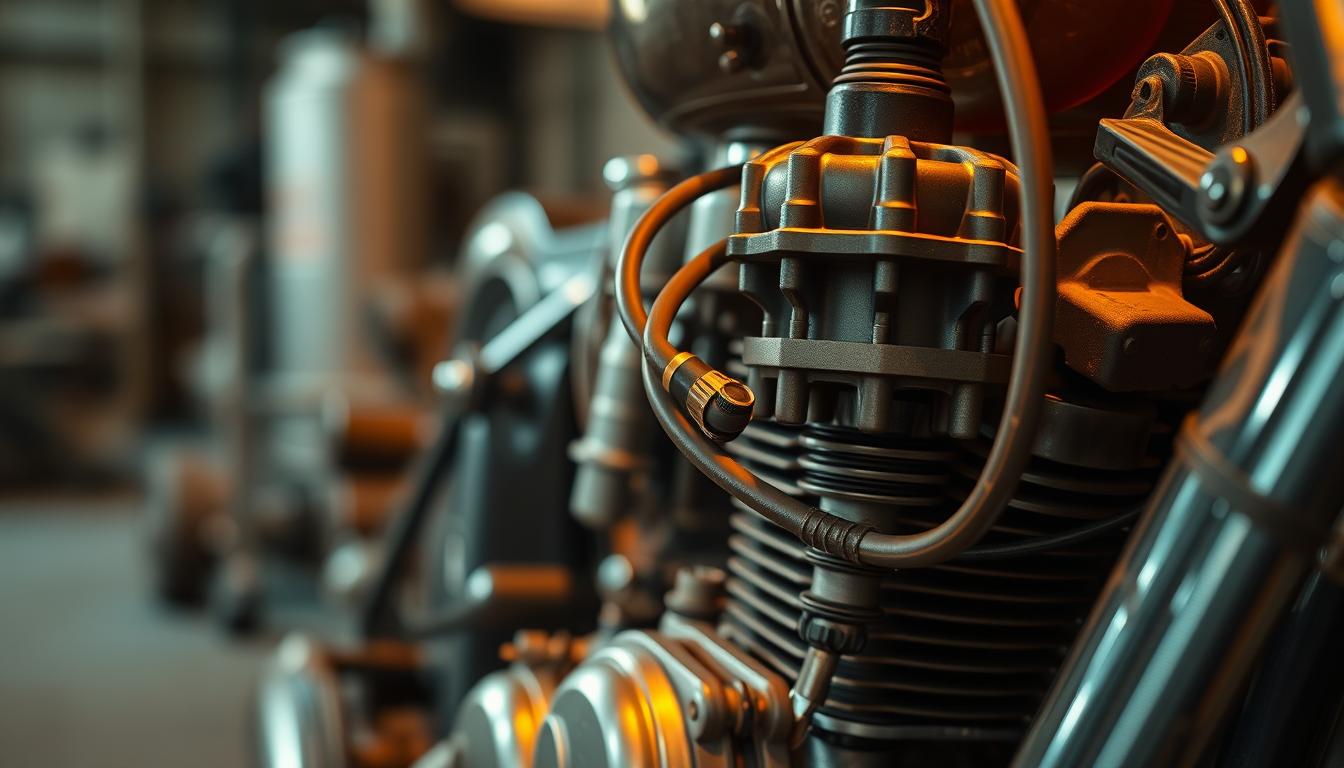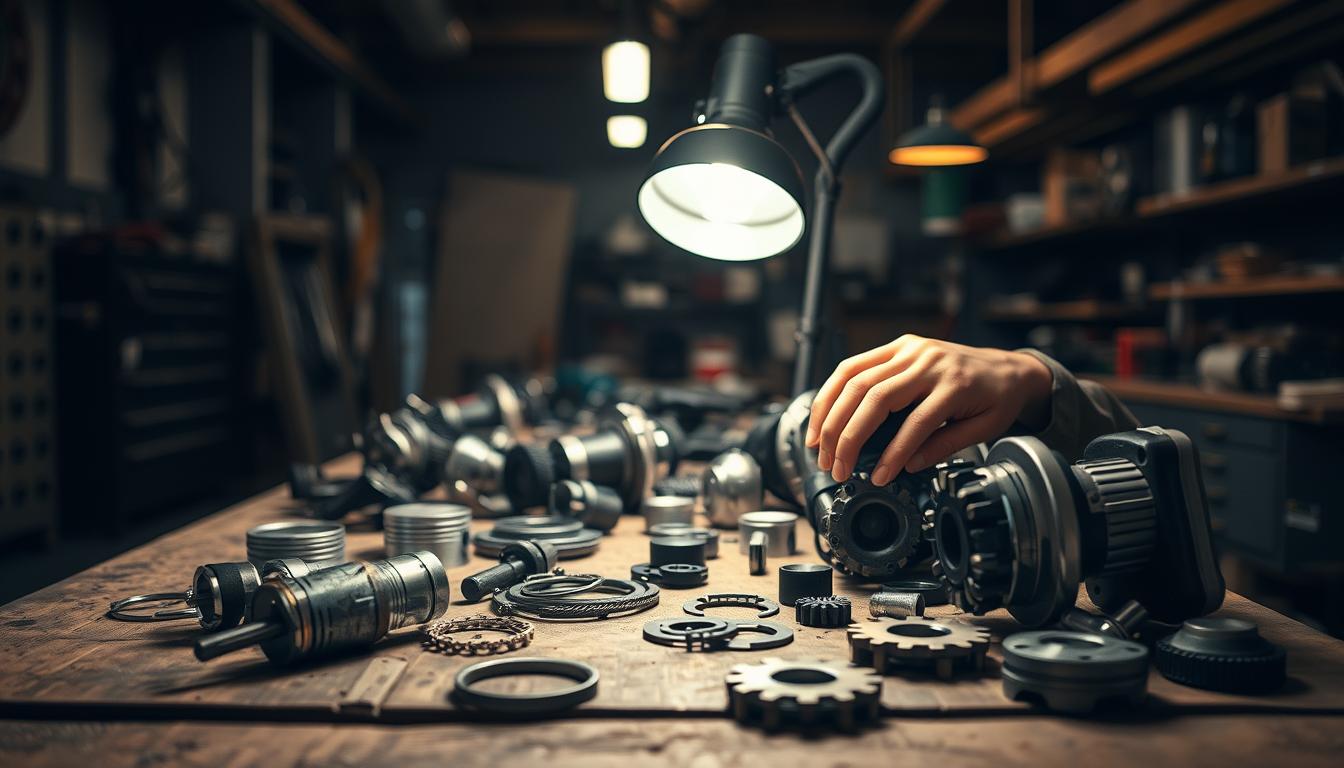Ever wondered why your bike struggles to start on a chilly morning or misfires during a long ride? The answer often lies in the ignition system, a critical component that ensures your engine runs smoothly. Whether you’re cruising down the street or tackling rough roads, a dependable ignition system is essential for optimal performance.
For Australian riders, sourcing high-quality parts like ignition coils, spark plugs, and CDI units can make all the difference. These components not only improve reliability but also enhance your bike’s overall efficiency. However, finding trusted replacements requires careful consideration, especially when upgrading or repairing older models.
In this guide, we’ll explore how to identify and source reliable ignition kits and components that meet safety and performance standards. From understanding the role of electronic ignition systems to practical tips for maintenance, this article will equip you with the knowledge to keep your bike running at its best.
Key Takeaways
- Reliable ignition systems ensure smooth engine starts and consistent performance.
- High-quality components like ignition coils and spark plugs are essential for efficiency.
- Careful sourcing of used parts can save costs without compromising safety.
- Regular maintenance of ignition systems prevents unexpected breakdowns.
- Understanding different ignition types helps in making informed replacement decisions.
Understanding Motorcycle Ignition Systems
What’s the secret behind a smooth and reliable engine start every time? It’s all about the ignition system. This critical setup ensures your bike’s engine fires up efficiently, no matter the conditions.
Role and Importance in Engine Performance
The ignition system is responsible for creating the spark that ignites the air-fuel mixture in your engine. Without it, your bike simply wouldn’t run. Components like the ignition coil and spark plugs work together to generate the high-voltage spark needed for combustion.
Modern electronic ignition systems have replaced older points systems, offering greater precision and reliability. These systems use advanced technology to ensure consistent performance, even in challenging weather or after long periods of inactivity.
Ensuring Reliable Starts and Smooth Riding
A well-maintained ignition system ensures your bike starts effortlessly, even on cold mornings. It also contributes to smoother engine operation, reducing the risk of misfires or stalling. For example, the ignition coil transforms 12 volts into 20,000 volts, creating the spark needed to ignite the fuel.
Whether you’re riding a Honda, Yamaha, or Kawasaki, a reliable ignition system is key to keeping your bike on the road. Regular maintenance and quality components can make all the difference in your riding experience.
Key Ignition Components and Their Functions
Curious about the parts that ensure your ride starts smoothly and runs efficiently? The ignition system relies on several critical components working together. Each part plays a unique role in delivering the spark your engine needs to perform at its best.
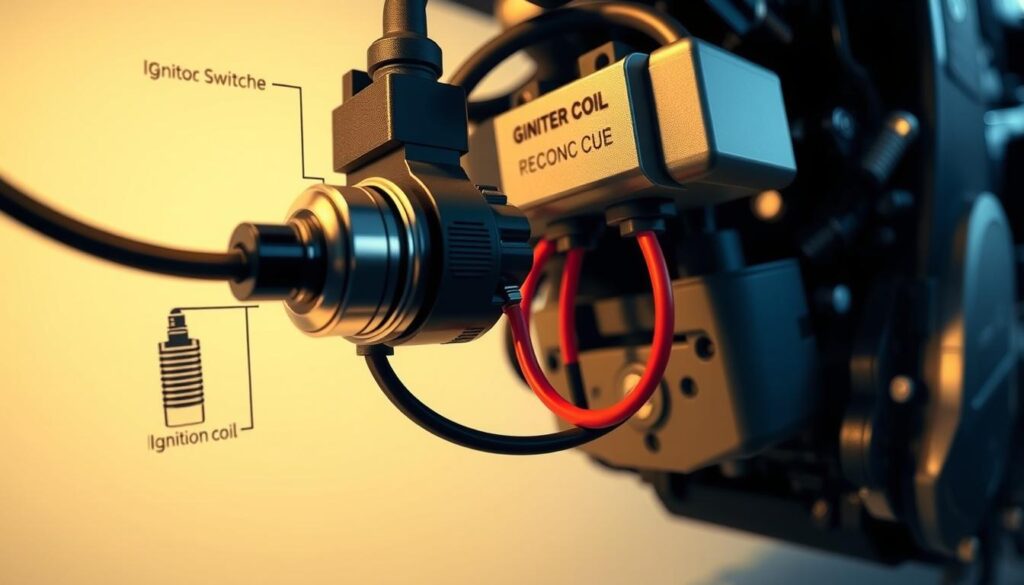
Ignition Coil, Spark Plugs, and Stator Essentials
The ignition coil is the heart of the system. It transforms 12 volts into up to 40,000 volts, creating the spark that ignites the fuel in your engine. Without it, your bike wouldn’t start. The spark plugs then deliver this high-voltage spark to the combustion chamber, ensuring efficient burning of the air-fuel mixture.
The stator is another vital part. It generates the electrical power needed to keep the system running. Together, these components ensure your engine fires up reliably, even in challenging conditions.
- Ignition Coil: Converts low voltage to high voltage for the spark.
- Spark Plugs: Deliver the spark to ignite the fuel.
- Stator: Provides the electrical power for the system.
CDI Units and Additional Supporting Parts
The CDI unit (Capacitor Discharge Ignition) is the brain of the system. It regulates the timing of the spark, ensuring it happens at the right moment for optimal engine performance. This precision improves efficiency and reduces emissions.
Other supporting parts, like the ignition module and sensors, work in harmony to monitor and control the system. For example, the magnetic sensor detects the position of the crankshaft, providing critical data for timing.
- CDI Unit: Controls spark timing for better performance.
- Ignition Module: Manages the electrical signals.
- Sensors: Monitor engine conditions for precise timing.
When any of these parts fail, your engine may struggle to start or run poorly. That’s why sourcing high-quality components is essential for maintaining consistent performance and reliability.
Types of Ignition Systems for Motorcycles
Understanding the different ignition setups can help you make smarter choices for your ride. Over the years, these systems have evolved significantly, offering improved performance and reliability. Let’s explore the key types and their benefits.
Comparing Points and Electronic Ignition
Traditional points ignition systems have been around since the 1910s. They rely on mechanical contact breakers to create a spark. While simple and affordable, they require frequent maintenance. Issues like pitted or corroded points can lead to poor performance.
Modern electronic ignition systems, introduced in the late 1970s, offer greater precision. They use sensors and modules to control spark timing, ensuring consistent performance. These systems are more reliable and require less upkeep, making them a popular choice for riders.
| Feature | Points Ignition | Electronic Ignition |
|---|---|---|
| Maintenance | High | Low |
| Reliability | Moderate | High |
| Cost | Low | Moderate |
| Performance | Basic | Enhanced |
Benefits of Transistorised Ignition Systems
Transistorised ignition systems, also known as TCI, take reliability to the next level. They use transistors to control the spark, eliminating the need for mechanical parts. This reduces wear and tear, ensuring longer-lasting performance.
These systems are particularly effective in sporty bikes, where precise timing is crucial. Riders often report smoother acceleration and better fuel efficiency after switching to TCI. Additionally, they contribute to lower emissions, making them an eco-friendly option.
For example, a rider upgrading their Yamaha or Honda to a TCI system noticed a significant improvement in throttle response. This highlights how modern technology can enhance your riding experience.
Used Motorcycle Ignition Systems: Finding Quality Parts in Australia
Finding dependable parts for your bike’s electrical setup can be a challenge, especially when quality matters. In Australia, sourcing reliable components like ignition coils and CDI units requires careful evaluation. Here’s how to ensure you’re getting the best value without compromising performance.

How to Identify Reliable Systems and Kits
Start by checking the condition of the parts. Look for signs of wear or damage, such as corrosion on coils or frayed wires. Verified performance reviews can also provide insights into the reliability of a kit.
Manufacturer reputation is another key factor. Brands like Honda, Yamaha, and Kawasaki are known for their durable components. Cross-checking model compatibility ensures the part fits your bike perfectly.
According to Parts Outlet, inspecting components like stators and CDI units is crucial. Genuine parts often come with warranties, offering peace of mind and long-term reliability.
When shopping, consider trusted platforms like eBay or Gumtree. Local salvage yards can also be a treasure trove for affordable, high-quality components. Networking with repair shops can provide additional insights into part availability and pricing.
Finally, always test the system before installation. A well-functioning ignition setup ensures smoother starts and better overall performance. By following these tips, you can upgrade your bike’s electrical system with confidence.
Optimising Your Motorcycle’s Ignition Performance
Want to boost your bike’s performance without breaking the bank? Upgrading your ignition components can make a significant difference. From better throttle response to improved fuel efficiency, these changes can transform your ride.
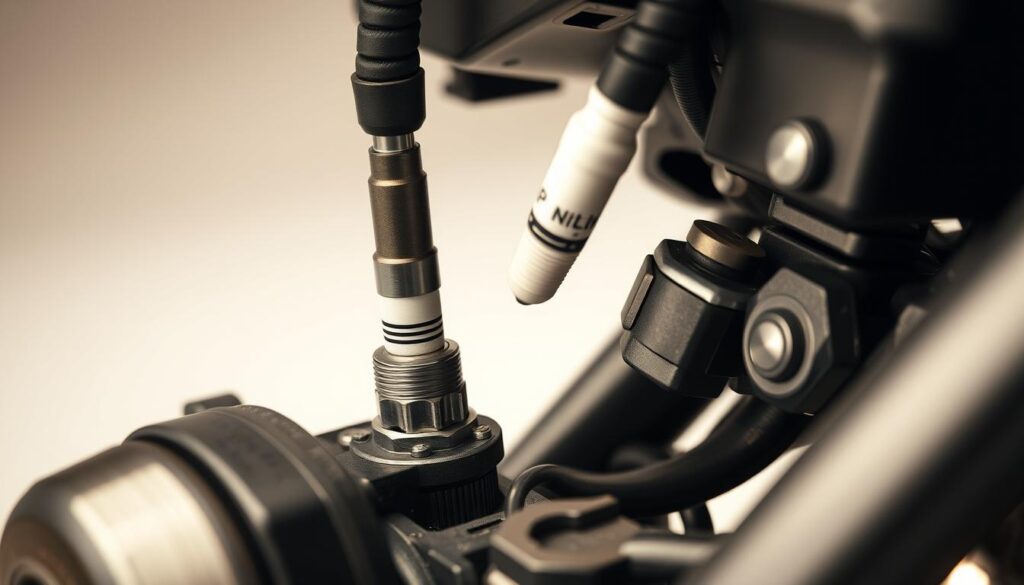
Upgrading Coils and Sensors for Better Throttle Response
High-performance coils and sensors can drastically improve your bike’s throttle response. These components ensure a stronger, more consistent spark, which leads to smoother acceleration. For example, upgrading to a high-performance coil can increase voltage output, enhancing combustion efficiency.
Technical data shows that a coil with a 70:1 winding ratio can produce up to 40,000 volts, compared to the standard 20,000 volts. This extra power ensures your engine runs at its best, even under demanding conditions.
Enhancing Fuel Efficiency and Overall Engine Power
Optimising your ignition system doesn’t just improve performance—it also boosts fuel efficiency. A well-tuned system ensures the air-fuel mixture burns completely, reducing waste and lowering emissions. This means you’ll get more kilometres out of every tank.
Investing in quality parts like sensors and modules can also extend your engine’s lifespan. These components reduce wear and tear, ensuring your bike stays reliable for years to come.
| Component | Standard Performance | Upgraded Performance |
|---|---|---|
| Ignition Coil | 20,000 volts | 40,000 volts |
| Fuel Efficiency | Moderate | High |
| Throttle Response | Basic | Enhanced |
Practical steps like regular maintenance and timely upgrades can keep your ignition system in top shape. Many riders report noticeable improvements in both power and efficiency after making these changes. Whether you’re cruising on the road or tackling rough streets, a well-optimised system ensures a smoother, more responsive ride.
Installation and Timing Tips for a Smooth Fit
Getting your bike’s electrical setup right can make all the difference in how it performs on the road. Whether you’re installing a new kit or replacing an old one, following the correct steps ensures a seamless fit and optimal operation. Let’s dive into the details to help you get it right the first time.
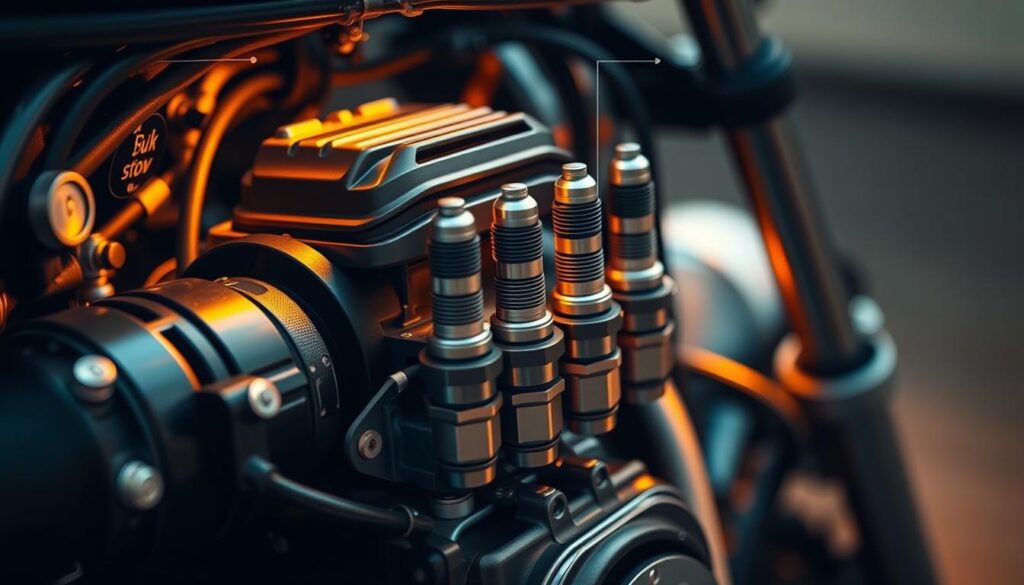
Step-by-Step Installation Guidance
Start by gathering the necessary tools, including a ¼” drive socket set and a miniature spanner kit. These precision tools are essential for handling small components like screws and connectors. Before you begin, ensure the bike is on a stable surface and the battery is disconnected for safety.
Begin by removing the old part, carefully noting the position of each wire and connector. Use thread-loc on screws to prevent them from loosening over time. When installing the new coil, ensure it’s securely mounted and all connections are tight.
- Use sticky pads to position sensors accurately, avoiding direct bright light to prevent interference.
- Double-check all connections before reassembling the bike.
- Refer to the fault-finding chart if you encounter issues during installation.
Correct Timing Procedures for Optimal Operation
Timing is critical for your bike’s performance. Incorrect timing can lead to poor fuel efficiency and engine misfires. Start by aligning the rotor correctly, ensuring it fits snugly to avoid vibrations. Use a timing light to verify the spark occurs at the right moment.
If you’re using an electronic system, follow the manufacturer’s instructions for setting up the module. Avoid rushing this step, as precise timing ensures smoother starts and better throttle response. Once set, test the bike at idle and under load to confirm everything is working as it should.
Finally, perform a thorough check of all components before hitting the road. Look for loose wires, ensure sensors are properly positioned, and confirm the kit is functioning correctly. Taking these extra steps ensures your bike runs smoothly and reliably.
Customer Experiences and Performance Reviews
What do riders say about upgrading their bike’s electrical setup? Real-world testimonials provide valuable insights into the benefits and challenges of modern ignition systems. From smoother starts to better throttle response, these upgrades have transformed riding experiences for many.
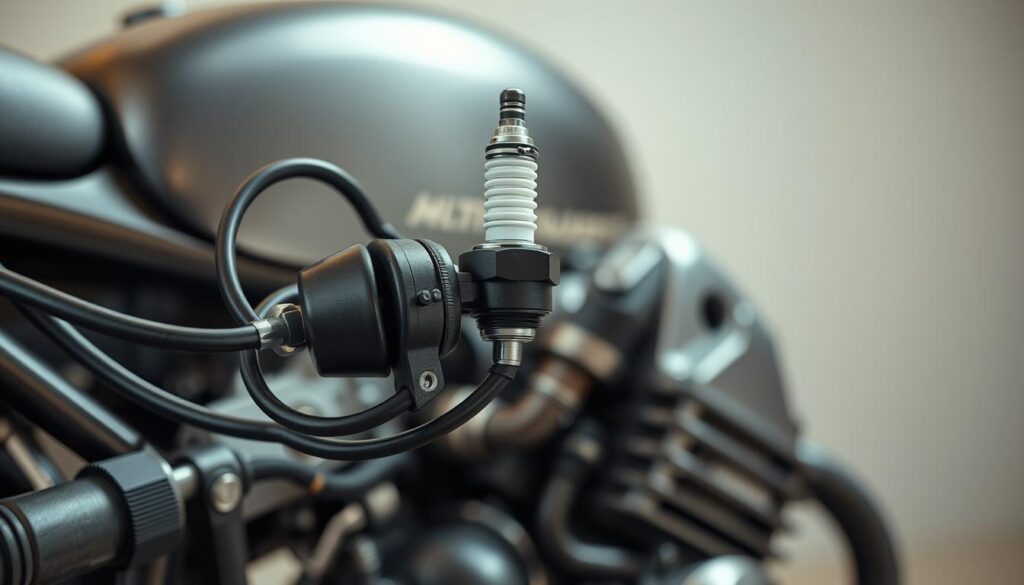
Real-World Testimonials from Australian Riders
Australian riders have shared their experiences with upgraded kits. Ray S. from Sydney noted, “My Honda starts effortlessly now, even on cold mornings.” Glenn from Melbourne reported a significant improvement in throttle response after installing a high-performance coil.
Another rider, Sarah from Brisbane, praised the reliability of her new system. “I’ve done over 10,000 kilometres without a single issue,” she said. These testimonials highlight the practical benefits of investing in quality parts.
Comparative Insights Across Various Motorcycle Models
Riders across different models have also shared their feedback. BMW owners reported smoother idling and improved fuel efficiency. Suzuki and Kawasaki riders noted easier starts and better overall performance.
Here’s a comparison of experiences across popular models:
| Model | Improvements Reported |
|---|---|
| BMW | Smoother idle, better fuel efficiency |
| Honda | Easier starts, enhanced throttle response |
| Suzuki | Improved reliability, smoother acceleration |
| Kawasaki | Better overall performance, reduced misfires |
For more detailed discussions on ignition issues and solutions, check out this forum thread.
In summary, riders across Australia and beyond have praised the reliability and performance of upgraded ignition systems. Whether you’re riding a Honda, BMW, or Kawasaki, these upgrades can significantly enhance your experience on the road.
Conclusion
Ensuring your ride starts smoothly every time requires the right components and careful maintenance. This guide has explored how to source, understand, and optimise your ignition system for reliable performance. From selecting high-quality coils to following proper installation procedures, every step matters.
By choosing trusted kits and brands like Honda, you can enhance your bike’s efficiency and longevity. Real-world experiences from Australian riders highlight the benefits of upgrading, from smoother starts to better fuel economy.
Whether you’re on the road or in the shop, investing in reliable components ensures your bike performs at its best. For more detailed guidance, explore further resources or consult professionals to keep your ride running smoothly.

